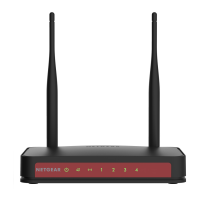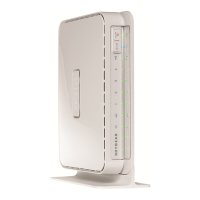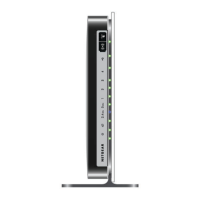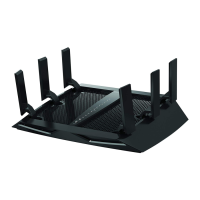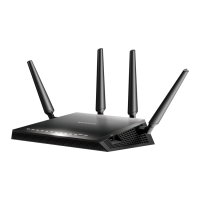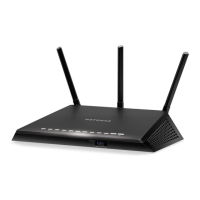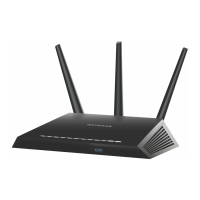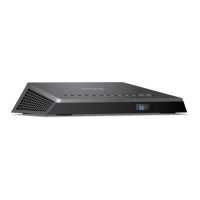Virtual Private Networking
114
N300 Wireless ADSL2+ Modem Router DGN2200v3
c. In the Authentication Method drop-down list, select Pre-Shared key.
d. In the
Encrypt Alg drop-down list, select the type of encryption that is configured for
the Encryption Protocol in the modem router in Table 4 on p
age 105. This example
uses Triple DES.
e. In the Hash Alg dro
p-down list, select SHA-1.
f. In the SA Life drop-d
own list, select Unspecified.
g. In the Key Gro
up drop-down list, select Diffie-Hellman Group 2.
6. Configu
re the VPN client key exchange proposal.
In this step, you provide the type of encryption (DES or 3DES) to be used for this
con
nection. This selection has to match your selection in the modem router configuration.
a. Exp
and the Key Exchange subheading by double-clicking its name or clicking the +
symbol. Then click Proposal 1 below Key Exchange.
b. In the SA Life drop-down list, select Unspecified.
c. In the Compressio
n drop-down list, select None.
d. Select the E
ncapsulation Protocol (ESP) check box.
e. In the
Encrypt Alg drop-down list, select the type of encryption that is configured for
the encryption protocol in the modem router in Table 4 on
page 105. This example
uses Triple DES.
f. In the Hash Alg dro
p-down list, select SHA-1.
g. In the Encap
sulation drop-down list, select Tunnel.
h. Leave the Authenticati
on Protocol (AH) check box cleared.
7. Save the VPN client sett
ings.
In the Security Policy Editor window, select File > Sav
e.
After you have configured and saved the VPN client information, your PC automatically
open
s the VPN connection when you attempt to access any IP addresses in the range of
the remote VPN router’s LAN.
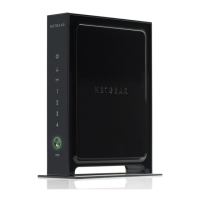
